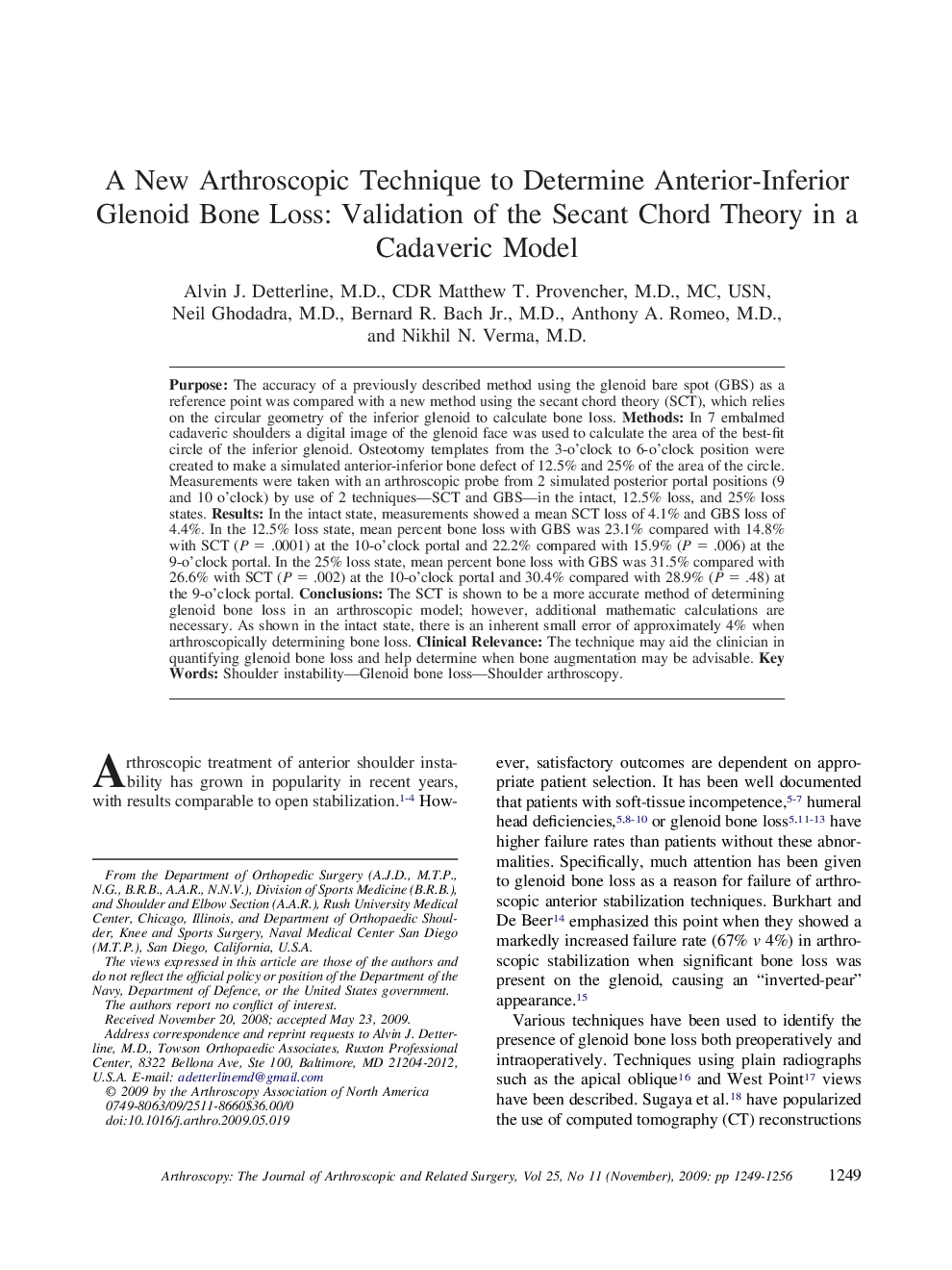| کد مقاله | کد نشریه | سال انتشار | مقاله انگلیسی | نسخه تمام متن |
|---|---|---|---|---|
| 4046581 | 1603565 | 2009 | 8 صفحه PDF | دانلود رایگان |

PurposeThe accuracy of a previously described method using the glenoid bare spot (GBS) as a reference point was compared with a new method using the secant chord theory (SCT), which relies on the circular geometry of the inferior glenoid to calculate bone loss.MethodsIn 7 embalmed cadaveric shoulders a digital image of the glenoid face was used to calculate the area of the best-fit circle of the inferior glenoid. Osteotomy templates from the 3-o'clock to 6-o'clock position were created to make a simulated anterior-inferior bone defect of 12.5% and 25% of the area of the circle. Measurements were taken with an arthroscopic probe from 2 simulated posterior portal positions (9 and 10 o'clock) by use of 2 techniques—SCT and GBS—in the intact, 12.5% loss, and 25% loss states.ResultsIn the intact state, measurements showed a mean SCT loss of 4.1% and GBS loss of 4.4%. In the 12.5% loss state, mean percent bone loss with GBS was 23.1% compared with 14.8% with SCT (P = .0001) at the 10-o'clock portal and 22.2% compared with 15.9% (P = .006) at the 9-o'clock portal. In the 25% loss state, mean percent bone loss with GBS was 31.5% compared with 26.6% with SCT (P = .002) at the 10-o'clock portal and 30.4% compared with 28.9% (P = .48) at the 9-o'clock portal.ConclusionsThe SCT is shown to be a more accurate method of determining glenoid bone loss in an arthroscopic model; however, additional mathematic calculations are necessary. As shown in the intact state, there is an inherent small error of approximately 4% when arthroscopically determining bone loss.Clinical RelevanceThe technique may aid the clinician in quantifying glenoid bone loss and help determine when bone augmentation may be advisable.
Journal: Arthroscopy: The Journal of Arthroscopic & Related Surgery - Volume 25, Issue 11, November 2009, Pages 1249–1256